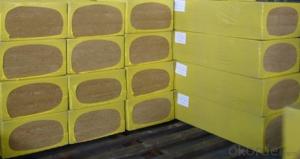When you think of heating, ventilation, and air conditioning (HVAC) systems, what comes to mind? For many, it’s the central unit that silently hums away, keeping us comfortable in our homes and workplaces. But there’s a hidden hero in this equation, and it’s none other than the flexible ducts. These unsung champions of comfort are the lifeblood of HVAC systems, ensuring that air flows smoothly and efficiently to every corner of a building. Let’s dive into the world of flexible ducts and explore their versatility and importance in HVAC systems.
The Backbone of Airflow
Flexible ducts, often made from a variety of materials including metal, plastic, and composites, are designed to connect the HVAC system to the various rooms it serves. They are the veins and arteries of the system, transporting air throughout the building. Unlike rigid ducts, flexible ducts can easily navigate around obstacles, bend around corners, and fit into tight spaces, making them ideal for installations in homes and commercial buildings where space is at a premium.
Easy to Install, Easy to Love
One of the most significant advantages of flexible ducts is their ease of installation. They require less labor and time compared to rigid ducts, which can be a game-changer for contractors and homeowners alike. The flexibility of these ducts allows for a more straightforward setup, reducing the need for additional parts and fittings. This not only speeds up the installation process but also cuts down on costs. Plus, who doesn’t love a good deal?
Custom Fit for Every Space
Every building is unique, with its own set of quirks and challenges. That’s where the customizability of flexible ducts comes into play. They can be easily cut and adjusted to fit the specific dimensions of a room or an area within a building. This ensures that the airflow is optimized for each space, contributing to a more comfortable and energy-efficient environment.
Energy Efficiency and Comfort
Flexible ducts play a crucial role in maintaining energy efficiency within HVAC systems. By allowing for better airflow control, they help to reduce energy consumption and lower utility bills. Moreover, they contribute to a more consistent temperature distribution throughout the building, ensuring that every corner is as comfortable as the next.
Sound Attenuation and Noise Reduction
Did you know that flexible ducts can also help to reduce noise? They have a natural ability to absorb and dampen sound, making them an excellent choice for areas where noise reduction is a priority. This is particularly beneficial in commercial settings, such as offices and restaurants, where a quiet environment can enhance productivity and the overall experience for customers.
Maintenance and Durability
While flexible ducts are known for their durability, they do require regular maintenance to ensure their optimal performance. This includes checking for any signs of wear and tear, leaks, or blockages. By taking care of these ducts, you can extend their lifespan and keep your HVAC system running smoothly.
The Future of Flexible Ducts
As technology advances, so too does the design and functionality of flexible ducts. Innovations in materials and manufacturing processes are leading to more efficient, longer-lasting ducts that can adapt to the ever-changing needs of modern buildings.
Embracing the Versatility of Flexible Ducts
In conclusion, flexible ducts are more than just a component of HVAC systems; they are a key element in creating comfortable, energy-efficient, and quiet environments. Their versatility, ease of installation, and customizability make them an invaluable asset in the world of HVAC. So the next time you enjoy the cool breeze of an air conditioner or the warmth of a heater, remember the humble flexible ducts that make it all possible.
Whether you’re a homeowner looking to upgrade your HVAC system or a contractor seeking the best solutions for your projects, flexible ducts deserve a serious look. They might just be the key to unlocking a new level of comfort and efficiency in your space.

